CTS-02V4(Concrete Test and Surveyor)
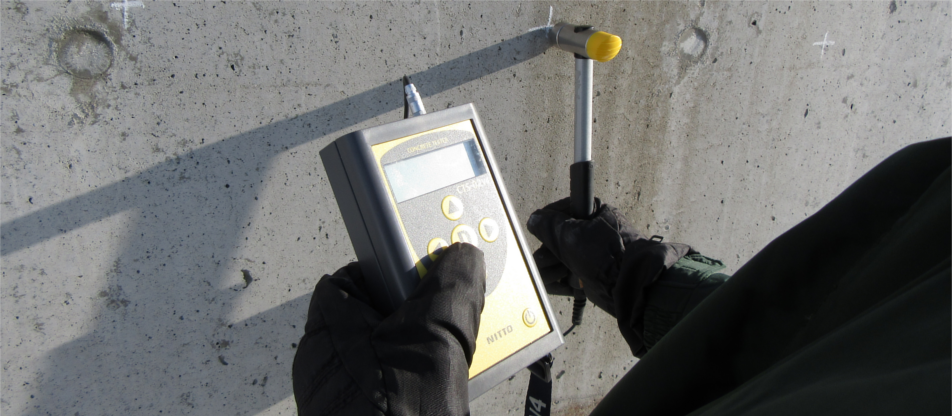
Non-destructive testing equipment for primary screening
CTS-02v4 was developed after the collapse at a railroad tunnel in 1999. Existing inspection methods were insufficient to assess the condition of concrete in terms of measurement accuracy, convenience of data analysis, objectivity and traceability of measured data. CTS-02v4 is an ideal non-destructive testing equipment to solve these issues. Estimated compressive strength of target concrete will displayed on the display right after the hammer blow, and the data can be transferred to your PC with USB connection.
Contents
1.Applications
2.Comparison
3.Specification
4.How to Use
5.Basic Principle
6.Typical Measured Waveforms
2.Comparison
3.Specification
4.How to Use
5.Basic Principle
6.Typical Measured Waveforms
Applications
〇Estimation for compressive strength of concrete (Normal to High strength concrete)
〇Detecting degree of degradation of concrete surface
〇Detecting delamination of concrete surface
〇Detecting aggregate pop-out
〇Detecting degree of degradation of concrete surface
〇Detecting delamination of concrete surface
〇Detecting aggregate pop-out
Comparison
Comparison on Estimation of Compressive Strength
CTS
Rebound hammer
Estimation accuracy
※Comparison with compression test as 100% based on our experiment
※Comparison with compression test as 100% based on our experiment
85%
50%
Applicable range of strength
10~150N/mm2
10~70N/mm2
Data correction
Unnecessary
Necessary
Number of measurement point
3250 point/day
1500 point/day
Data analysis
6375 point/day
1000 point/day
Comparison on detection of delamination of concrete
CTS
Inspection hammer (hammer sounding test)
Judgement criteria
Objective
Subjective
Data output
CSV (digital)
Paper (analog)
Specifications
Model Name
CTS-02V4(Concrete Test and Surveyor)
Applicable Standard
NDIS3434-3
Storage case dimensions
390mm x 255mm x 120mm
Body size
108mm x 69mm x 42mm
Hammer Weight
380g
Waveform Measurement
Sampling clock: 0.5µs, Measuring time: 2 ms
Power supply
AA Batteries x 4 (for 12 hours)
Connection to PC
USB
Number of measurement data
Up to approx. 500,000
Accessories
USB cable(A - mini B)
Strap
Storage case
AA batteries x 4
CD-ROM (Application software, device driver, User manual)
Strap
Storage case
AA batteries x 4
CD-ROM (Application software, device driver, User manual)
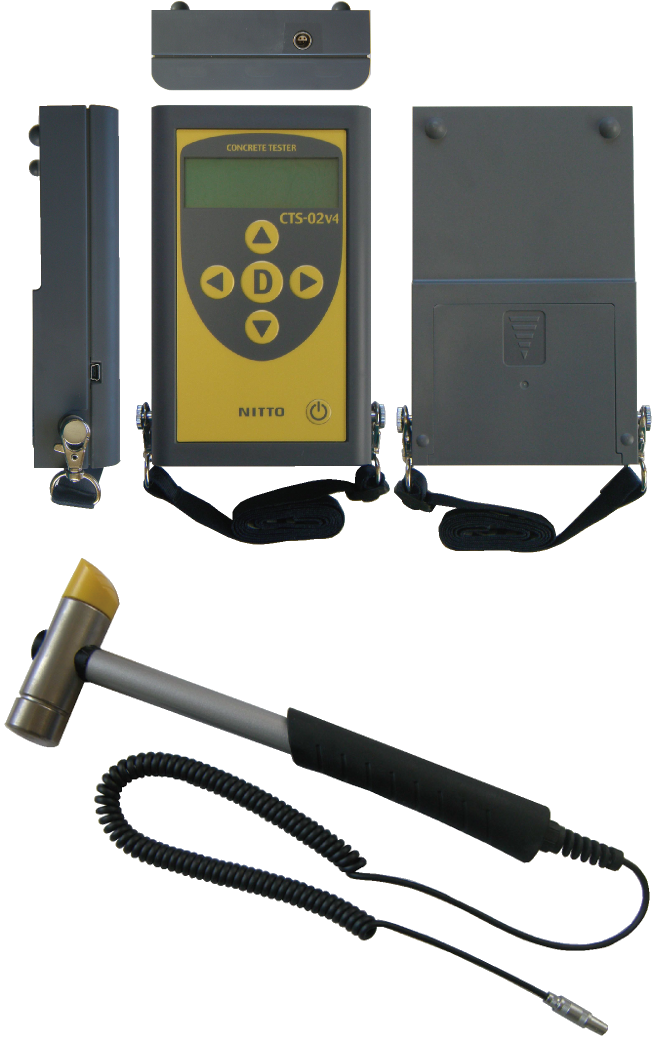
How to Use
Basic Principle
The waveform of impact force in below is obtained by tapping concrete with CTS. This wave form is measured by an accelerometer that installed on the hammer unit. Measured wave form can be divided into two part. The first half of the waveform shows the process that the hammer is pushing on the concrete surface. This process includes plastic deformation first, then elastic deformation of concrete surface. The second half of the waveform is the process that the hammer is rebounding from the concrete surface. In other words, the second half of the waveform is only affected by the characteristics of elasticity of concrete, and compressive strength of the concrete that is not affected by deterioration of concrete surface can be estimated. Besides, degree of deterioration of concrete surface can be determined from the ratio of the first half and the second half of the waveform.
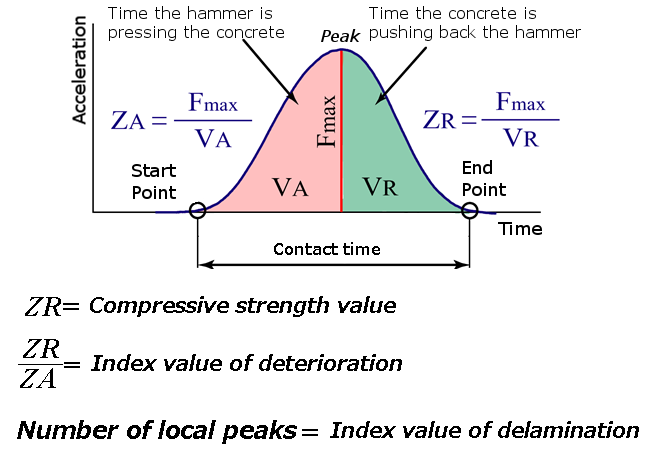
Typical Measured Waveforms
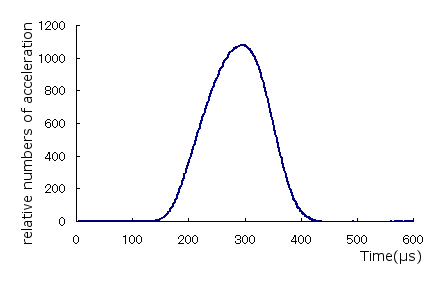
●Measured waveform of sound concreteThe shape of waveform will be symmetry. Since concrete is not perfectly elastic body, first half of the waveform shall contain an influence of elasticity of surface layer.
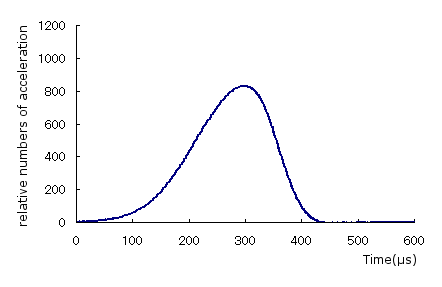
●Measured waveform of concrete with degraded surfaceFirst half of the waveform will be longer comparing to sound concrete. In this case, first half of the waveform contains an influence of elastic deformation of degraded concrete surface while it is reduced in the second half of the waveform.

●Measured waveform of concrete with delamination near the surface (1)
This type of waveform will be measured when delamination is occurred near the surface. The shape of waveform seems like a sound concrete, but peak of the waveform becomes lower and contact time of the hammer becomes longer. As the delaminated concrete surface reacts like a blade spring against hammer blow, maximum impact becomes lower and contact time becomes longer.

●Measured waveform of concrete with delamination near the surface (2)
When the concrete is seriously damaged (delaminated), decent waveform cannot be measured.
